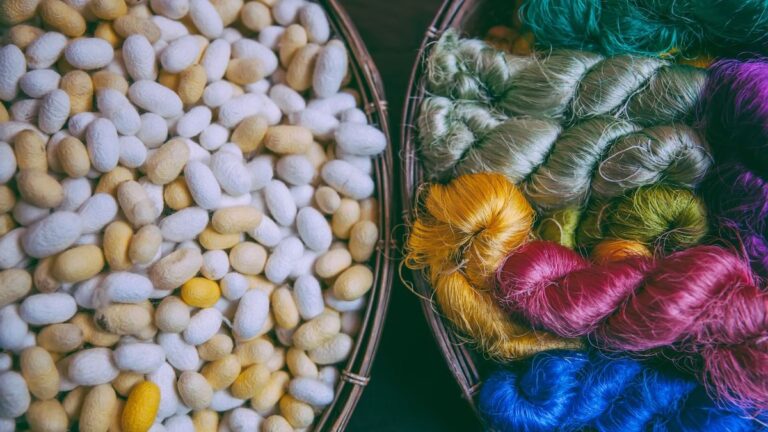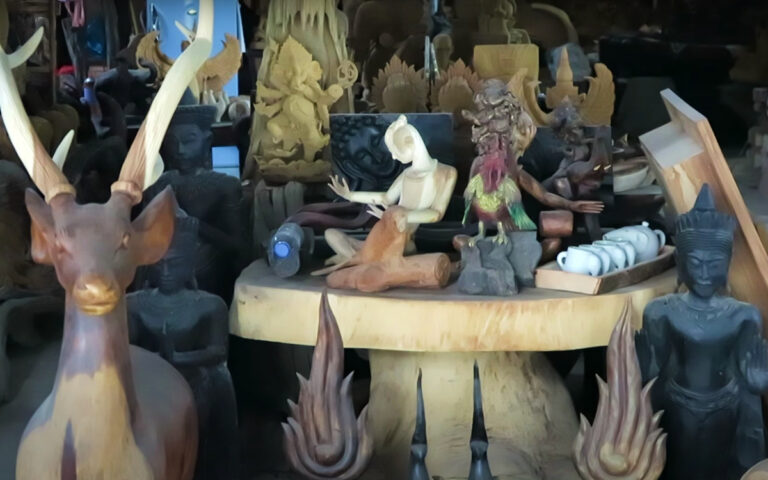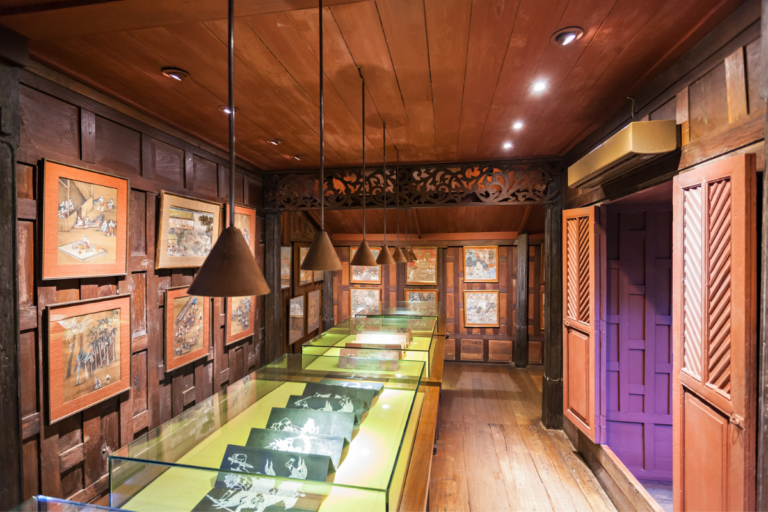Traditional Thai Dance
Thai dance has long been celebrated for its graceful movements and serves as a principal form of visual art in the country. Evidence of its integral role in Thai heritage and traditions can be found in the carvings of dancers and deities such as Shiva adorning the walls of ancient temples like the Angkor-era Prasat Phimai and Sukhothai Historical Park. Take a walk through these historical sites and immerse yourself in the beauty and significance of this revered art form.
Although disco and western orientated dance music have made some inroads into Thai culture, ram Thai is alive and well. Most visitors only see traditional Thai dance at cultural shows such as those held at Siam Niramit Theatre in Bangkok and the Alangkarn Theatre in Pattaya or at traditional dinners including Chiang Mai’s famed khantoke.
Traditional Thai dance has slight regional variations in its styles and choreography. Most of the old-style ram Thai is only performed by magnificently coiffured ladies dressed in colourful sarongs and matching tunics. Dances are enacted with lithe steps and elegant twirls of the hands.
 Fon
Fon
Fon Tian
Also known as candle dance. Fon Tian is a style of dance originated by royal consort Chao Dararasami in the latter years of the 19th century. Fon Tian dancers perform as solo acts or as part of a small troupe. Fon Thai dancers perform at temple parties, cultural venues and at street markets. The dancers choreograph their moves around musical styles from their regional locality.
Fon Lep
In the northern province of Chiang Mai female dancers wear long artificial fingernails and enact fon lep to the beat of drums. People wishing to take in a fon lep or other traditional dance performance in Chiang Mai can do so at Khum Khantoke or the Old Chiang Mai Cultural Centre while enjoying a traditional khantoke dinner. On Sunday evenings, the organisers of the weekly street market set up a stage on Phrapokkloa Road where traditional dancers, singers and musicians entertain.
Fon Ne-ow
In neighbouring Chiang Rai, fon ne-ow is the local variety of fon. The dancers are usually equal numbers of males and females who are dressed in old-style Burmese or hill-tribe outfits. This kind of dance can only be seen at festivals and cultural celebrations. The Night Bazaar in central Chiang Rai occasionally stages fon ne-ow dance shows.
Ram Dap
Knife dancing, or ram dap, is a dance predominantly performed by males in the northern provinces of Chiang Rai, Chiang Mai, Nan and Phrayao. Dancers pirouette around large knives, twirl them around their heads and even clench them between their teeth to the clashing of cymbals and drums. Ram dap is often part of the entertainment at temple parties and cultural shows. It is sometimes part of the repertoire of stage shows at the Galare Food Centre in Chiang Mai and Chiang Rai’s Night Bazaar.
King Kala
King kala is a traditional dance of the Tai Yai people who originally came from Myanmar’s Shan State. Many Tai Yai fled decades of civil strife in their homeland and have settled in the northern province of Mae Hong Son. King kala is performed on the day after Buddhist Lent (och pansa) ends and is believed to welcome the Lord Buddha back to earth.
King kala actually comprises two dances. One dancer dons a beautiful costume and large wings and dances the ram nok (bird dance). On the same stage, two dancers wearing fake lion skin and a goat or deer’s head enact the ram toe. This is pretty similar to the lion dances Chinese dancers use to welcome the Lunar New Year. People wishing to see a king kala dance can only do so in Mae Hong Son at och pansa or possibly at a cultural show.
Serng
In the northeast Esarn region of Thailand the variety of fon is serng. Serng is much faster than its northern compatriots. Dancers are accompanied by moh lam musicians playing kaen bamboo pipes, bonglang xylophones and pin (a kind of lute). The dancers wear bright outfits and use their hands to mimic various actions. Serng kratip kao is a version of this dance in which the women carry a small basket for sticky rice (kratip kao) and imitate the action of taking the rice to fields for their menfolk.
Khon
Khon dance is a style of dance from Bangkok and the central regions of the country. It focuses on the traditional Thai mythological tale of the Ramakien. Dancers of this style dress in ancient costumes with masks or headdresses representing various animals. The dances depict various scenes from the Ramakien. Lakhon is similar to khon, but can be based on any folk tale and is performed as a troupe.
Manora
Manora is peculiar to the southern provinces of Thailand. Dancers can be male or female. They wear costumes that resemble those from Balinese dances and ornate crowns. Female manora dancers frequently have a tail with a pompon on it and long curved false nails. The dance comprises a number of fixed movements and stances.
Ram Muay
Thai boxing bouts are preceded by a ritual called wai kru and the ram muay dance. Wai kru requires both boxers to get down on their knees and bow three times to their trainers and boxing forebears. There are no fixed moves for ram muay and the boxers perform various different ones designed to show off their athletic prowess. High-pitched horn music using a pee chawa is played for the dance and the ensuing fights.



